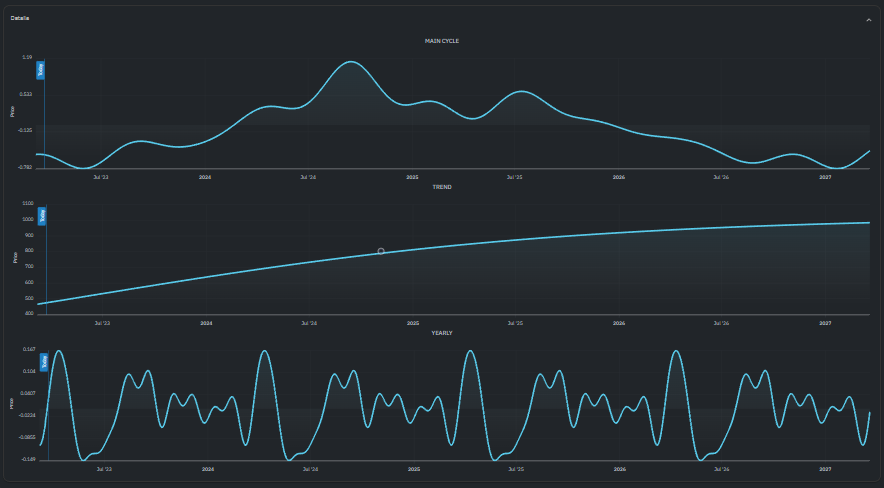20 Excellent Ways For Picking Ai Trading Sites
20 Excellent Ways For Picking Ai Trading Sites
Blog Article
Top 10 Tips To Customize Ai Trading Platforms For Your Strategy
The ability to customize the trading platform in accordance with your trading goals and risk tolerance and the current market conditions is an essential feature of AI-based stock prediction and analysis trading platforms. A platform that has extensive customization options can greatly improve the efficiency of your trading. Here are the 10 best strategies for evaluating the customizable options available on these platforms.
1. Evaluate Pre-Built Strategy Templates
A Variety of Templates: Check whether the platform that you trade on offers pre-built templates for various trading styles (e.g. Day Trading or Swing Trading, Long-Term Investing).
The ease of use is a good indication.
Performance history. Find out if the platform has historical data on performance for the prebuilt strategies.
2. Assess Custom Strategy Creation
Drag-and drop tools: Search for platforms with intuitive drag-and-drop interfaces for creating custom strategies.
Options for Coding: For users who are more advanced make sure the platform supports custom programming using a proprietary scripting language (e.g. Python, R).
Flexibility - Make sure the platform you select allows you to set rules for entry and exit, as well as parameters for risk management, as well as other key aspects of your strategy.
3. Check for Backtesting Capabilities
Historical data. Verify whether your platform can provide enough historical data to test the strategy.
Adjustable parameters: Ensure that you are able to adjust parameters (e.g., timeframes, indicators) during backtesting.
Performance metrics: Check if the platform offers specific performance metrics for backtested strategies (e.g. win rate, sharpe ratio drawdown, etc.).
4. Evaluate Real-Time Strategy Testing
Paper trading: Make sure the platform lets you play around with your strategies or to test them without risking any capital.
Live testing is a great method to determine if your strategy can be implemented in the market in small amounts.
Real-time adjustments: Verify whether strategies can be modified in real-time based on market conditions.
5. Evaluate the degree of integration with technical indicators
Indicator Library: Verify if the platform has a library of technical indicator (e.g. moving averages, RSI or MACD).
Custom indicators - Ensure that you can import or create your own custom indicators.
Check that the platform permits you to combine several indicators into complex strategies.
6. Check for Risk Management Tools
Stop-loss/take-profit: Ensure the platform allows you to set stop-loss and take-profit levels within your strategies.
Position sizing. Determine whether you can set up rules to size positions (e.g. percentage or a set amount) and control the risk.
Risk-reward-ratio: Check the support of the platform to set risk/reward ratios on individual trades or strategies for trading.
7. Evaluate Multi-Asset Strategy Support
Asset classes: Ensure that your platform is able to support different asset classes, like ETFs, stocks and options.
Cross-asset strategies: Determine if you are able to create strategies that include various types of assets (e.g. pairs trading, hedging).
Market coverage: Determine whether the platform provides the services you require (e.g. US, international or copyright).
8. Assess Automation & Execution
Automated Trading: Verify whether the platform is able to automate the execution of strategies based on rules predefined.
Order types - Make sure the platform can support a variety of order types to execute strategies (e.g. stop, limit or market).
Latency: Verify that the platform you are using has a low latency when trading, especially if use high-frequency strategies.
9. Check out the Strategies Optimization Tools
Optimization of parameters: Ensure that the platform has tools for optimizing strategy parameters (e.g. grid search or genetic algorithm).
Machine Learning Integration: Determine whether a platform incorporates machine-learning to optimize and refine the strategy.
Evaluation of scenarios: Find out if your platform is capable of testing various strategies to deal with different market scenarios, such as bullish, bearish, or volatile.
Review User Feedback and Community Support
User reviews: Review the feedback of users to assess the platform's ability to adapt strategies.
Community forums: Check whether you can find forums where users can discuss and share custom strategies.
Support resources for users - Make sure that the platform includes instructions and documents for users to create and improve strategies.
Bonus Tips
Trial period: Try the customization options of the platform without cost with a demo or demo.
Scalability: Ensure that the platform can cope with increasingly complicated strategies as your trading evolves.
Support for customers: Find out if the platform can provide support on strategy-related issues and queries.
If you follow these guidelines to evaluate the capabilities to customize strategies of AI platforms for analyzing and predicting stocks and ensure you select a platform that aligns with your goals in trading and allows you to develop and improve your strategies in a way that is efficient. A platform with powerful customization options will allow you to adapt to the changing market conditions and enhance your results. Check out the best ai investing recommendations for blog tips including ai stock trading, best stock analysis app, ai trader, ai investment advisor, using ai to trade stocks, best ai stock trading bot free, ai stock market, ai investment advisor, ai trading tools, chart analysis ai and more.
Top 10 Tips To Evaluate The Community And Social Features Of Ai Stock Trading Platforms
In order to better know the way that users interact, share and learn, it is vital to assess the social and community elements of AI-driven stock trading platforms. These features enhance the user experience by offering valuable assistance. Here are ten strategies to help you analyze the community and social features of these platforms.
1. Active User Community
Tip: Ensure the platform is active and has users who are participating in discussions, sharing their insights or offering feedback.
Why is that a vibrant community indicates a vibrant community in which users can grow and grow together.
2. Discussion Forums and Boards
You can evaluate the quality of an online discussion forum or message board by evaluating its activity levels.
Why Forums are important: They allow users to discuss market trends as well as ask questions and exchange strategies.
3. Social Media Integration
TIP: Determine if the platform works with social media channels (e.g., Twitter, LinkedIn) for sharing insights and news.
Why: Social media can be used to enhance engagement and deliver current market information in real time.
4. User-Generated Materials
Look for features such as the ability to create and share content.
The reason: User-generated content encourages collaboration, and it provides different perspectives.
5. Expert Contributions
Find out if experts from the field such as market analysts or AI experts, have contributed.
The reason: Expert opinions add credibility and depth to the community discussion.
6. Chat and messaging in real-time.
Tip: Evaluate the instant chat or messaging capabilities to allow instant messaging between users.
Reason: Real-time communication allows quick information exchange and collaboration.
7. Community Moderation Support
Tips Assess the degree of moderation and customer support in the community.
Why: Moderation is important to maintain a positive, respectful atmosphere. Support is available to help users resolve their issues as quickly as they can.
8. Webinars and events
Tips: Find out whether the platform is hosting events, webinars, or live Q&A with experts.
Why: These conferences provide an opportunity for industry professionals to network with fellow participants and gain knowledge from them.
9. User Reviews
Find platforms that allow users post reviews or provide feedback about their community features and platform.
What is the reason? Feedback from users helps identify strengths in the community's ecosystem as well as areas of improvement.
10. Rewards and gaming
Tip: Check to see if your platform has gamification (e.g. leaderboards, badges) or rewards provided to those who participate.
Gamification is a great way to encourage users' engagement in the online community.
Bonus Tip: Privacy and Security
To protect the data of users and their interactions, make sure that community and social features are protected by secure privacy and security controls.
You can look at these factors to see if you are capable of finding a platform that has a friendly and engaging community, which will enhance your trading abilities and knowledge. View the best ai stock trading app url for website tips including ai for trading, stock analysis tool, ai investment platform, ai based trading platform, ai for investing, free ai trading bot, ai stock trading, trading with ai, ai trading platform, stock analysis tool and more.